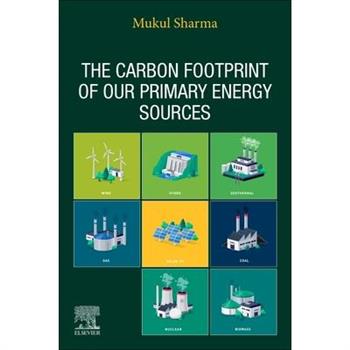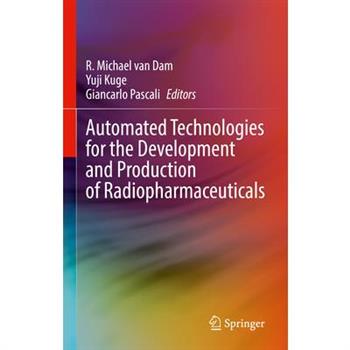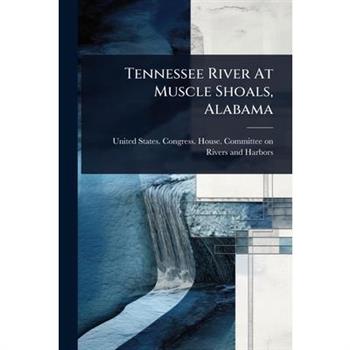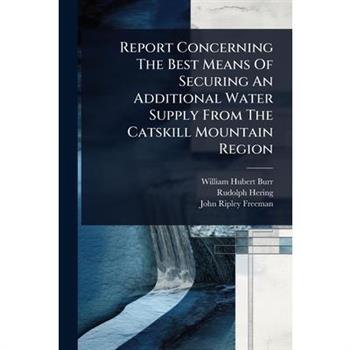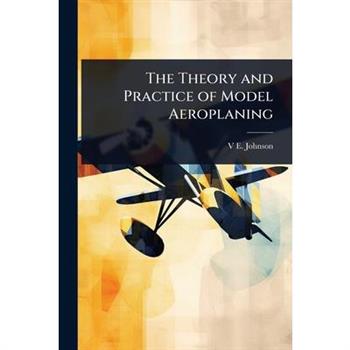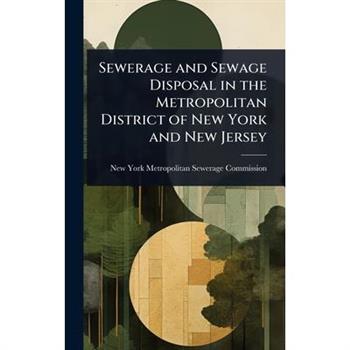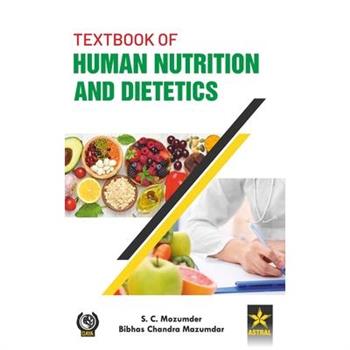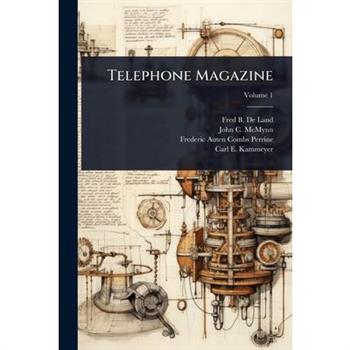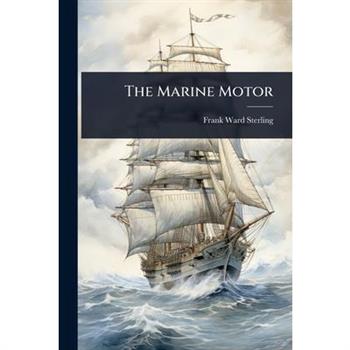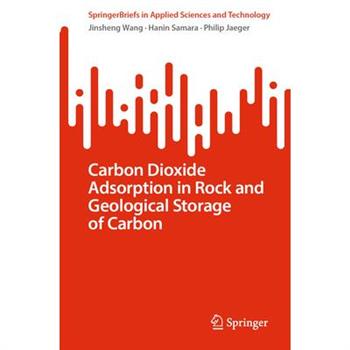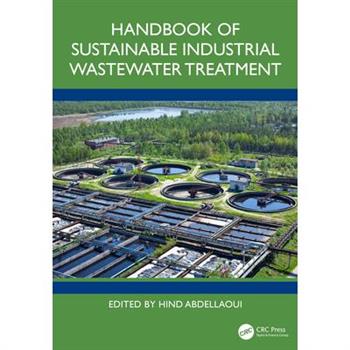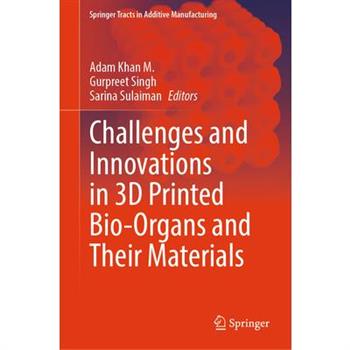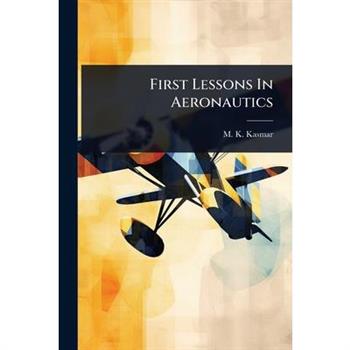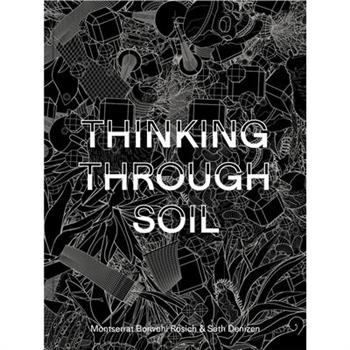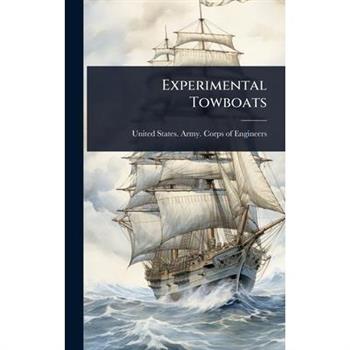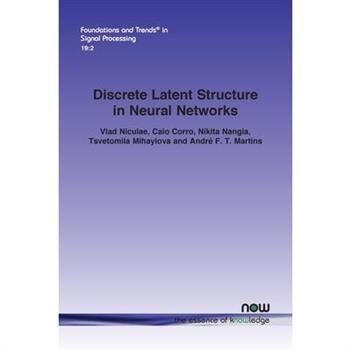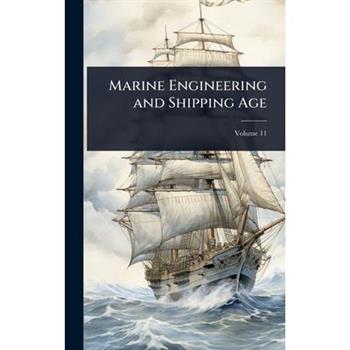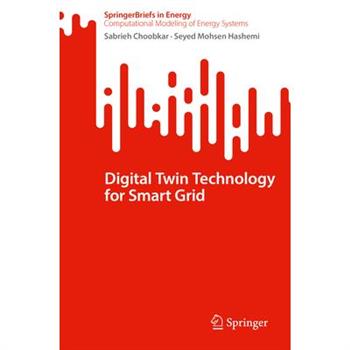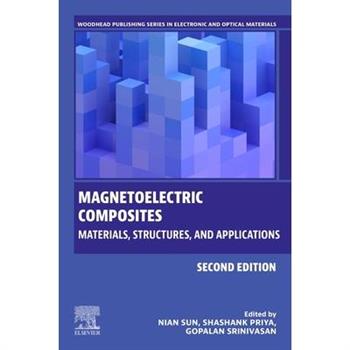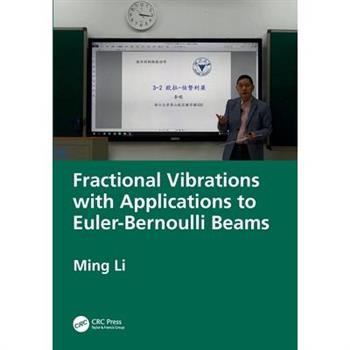The Carbon Footprint of Our Primary Energy Sources
The Carbon Footprint of our Primary Energy Sources supplies readers with a comprehensive, accessible analysis of the carbon footprints of a range of primary energy sources including crude oil, natural gas, coal, solar energy, wind energy, geothermal energy, hydroelectric energy and nuclear energy, and biofuels, and their carbon footprints, employing a full lifecycle assessment (LCA) of each primary energy source. It furnishes both the foundation and a tool for estimating carbon footprints for a range of energy systems. The work culminates in a cost-benefit analysis of these primary energy sources. With the significant uptick of global investment in alternative energies and the global focus on reducing emissions, this text delivers an important foundational overview/understanding of these systems, and an opportunity for teachers and readers to apply learnings to their own energy consumption choices.
Environmental Hazards of Plastic Wastes
Environmental Hazards of Plastic Wastes: Bioremediation Approaches for Environmental Clean-up focuses on the exploitation of various biological treatment technologies, their use to treat plastic contaminants, and restoration of contaminated sites. The book also addresses the biological treatment of plastic waste and its management of sustainable technologies for its reuse for environmental protection. The book examines advanced technologies, updated information, and future directions for researchers and scientists working in the bioremediation and biodegradation of plastic contaminants and reutilization of plastic wastes in the production of construction materials for environmental safety. The treatment of plastic wastes with environmentally benign approaches will be assessed in this book and will also provide ways to protect our natural environment by managing hazardous plastic pollutants through various techno-based, eco-friendly strategies.
Ophthalmic Biomaterials
Advances in technology have rapidly changed the way we treat ophthalmic diseases, especially with the development of new biomaterials used as prosthetics, for drug delivery devices, or to regenerate tissue. Bridging the gap between biomaterials scientists and ophthalmologists, this book includes overviews of devices and cutting-edge research on current and future strategies to treat acute and chronic diseases in the eye. Edited by leaders in the field, the book provides perspectives for both biomaterials scientists and ophthalmologists. Biomaterials scientists are given a background to the challenges in ophthalmology that advanced materials could solve. Ophthalmologists are provided a background on materials to enable them to better understand the devices they are using and their advantages and challenges. All readers are provided with a critical review of the current and future state of devices that are being used or are under development in devices, regenerative medicine, and drug delivery. This book is for those working in biomaterials science, biomedical engineering, chemical engineering, and clinicians specialising in ophthalmology, as well as those working in polymer science-based medical technologies.
Automated Technologies for the Development and Production of Radiopharmaceuticals
This is the first comprehensive book about the advanced technologies used in the radiopharmaceutical field. It covers each major area of radiopharmaceutical preparation, including radioisotope production and separation, multi-step radiosynthesis, analysis and quality control of the products as well as technologies for novel radiopharmaceutical development. Chapters are written by leaders in the field and comprehensively describe the evolution of relevant technologies, the current state-of-the-art, and future directions. The book will be an invaluable tool for researchers in radiochemistry or radiopharmaceutical development, disease researchers, and pharmaceutical researchers developing new drugs using in vivo imaging techniques in the drug development process.
Report Concerning The Best Means Of Securing An Additional Water Supply From The Catskill Mountain Region
This report details a comprehensive investigation into securing an additional water supply for a major metropolitan area from the Catskill Mountain region. Authored by William Hubert Burr, Rudolph Hering, and John Ripley Freeman, the study meticulously examines the feasibility, engineering requirements, and logistical considerations involved in such a large-scale project. The work offers valuable insights into the challenges and solutions associated with urban water management in the early 20th century, providing a historical perspective on infrastructure development and resource management. The report is an essential resource for engineers, historians, and anyone interested in the development of New York City's water system and the engineering feats required to bring fresh water from distant sources.This work has been selected by scholars as being culturally important, and is part of the knowledge base of civilization as we know it. This work was reproduced from the original artifact, and remains as true to the original work as possible. Therefore, you will see the original copyright references, library stamps (as most of these works have been housed in our most important libraries around the world), and other notations in the work.This work is in the public domain in the United States of America, and possibly other nations. Within the United States, you may freely copy and distribute this work, as no entity (individual or corporate) has a copyright on the body of the work.As a reproduction of a historical artifact, this work may contain missing or blurred pages, poor pictures, errant marks, etc. Scholars believe, and we concur, that this work is important enough to be preserved, reproduced, and made generally available to the public. We appreciate your support of the preservation process, and thank you for being an important part of keeping this knowledge alive and relevant.
Tennessee River At Muscle Shoals, Alabama
This historical document comprises statements made before a subcommittee of the Committee on Rivers and Harbors of the House of Representatives during the Sixty-first Congress, second session. It focuses on the Tennessee River at Muscle Shoals, Alabama. Featuring testimonies from Hon. William Richardson and others, this record provides valuable insight into early 20th-century debates concerning river improvements, navigation, and resource management. The content reflects discussions on the potential development, economic impact, and engineering challenges associated with harnessing the Tennessee River. It serves as a primary source for understanding the historical context of water resource management and infrastructure development in the American South.This work has been selected by scholars as being culturally important, and is part of the knowledge base of civilization as we know it. This work was reproduced from the original artifact, and remains as true to the original work as possible. Therefore, you will see the original copyright references, library stamps (as most of these works have been housed in our most important libraries around the world), and other notations in the work.This work is in the public domain in the United States of America, and possibly other nations. Within the United States, you may freely copy and distribute this work, as no entity (individual or corporate) has a copyright on the body of the work.As a reproduction of a historical artifact, this work may contain missing or blurred pages, poor pictures, errant marks, etc. Scholars believe, and we concur, that this work is important enough to be preserved, reproduced, and made generally available to the public. We appreciate your support of the preservation process, and thank you for being an important part of keeping this knowledge alive and relevant.
Report Concerning The Best Means Of Securing An Additional Water Supply From The Catskill Mountain Region
This report details a comprehensive investigation into securing an additional water supply for a major metropolitan area from the Catskill Mountain region. Authored by William Hubert Burr, Rudolph Hering, and John Ripley Freeman, the study meticulously examines the feasibility, engineering requirements, and logistical considerations involved in such a large-scale project. The work offers valuable insights into the challenges and solutions associated with urban water management in the early 20th century, providing a historical perspective on infrastructure development and resource management. The report is an essential resource for engineers, historians, and anyone interested in the development of New York City's water system and the engineering feats required to bring fresh water from distant sources.This work has been selected by scholars as being culturally important, and is part of the knowledge base of civilization as we know it. This work was reproduced from the original artifact, and remains as true to the original work as possible. Therefore, you will see the original copyright references, library stamps (as most of these works have been housed in our most important libraries around the world), and other notations in the work.This work is in the public domain in the United States of America, and possibly other nations. Within the United States, you may freely copy and distribute this work, as no entity (individual or corporate) has a copyright on the body of the work.As a reproduction of a historical artifact, this work may contain missing or blurred pages, poor pictures, errant marks, etc. Scholars believe, and we concur, that this work is important enough to be preserved, reproduced, and made generally available to the public. We appreciate your support of the preservation process, and thank you for being an important part of keeping this knowledge alive and relevant.
The Theory and Practice of Model Aeroplaning
Dive into the captivating world of early aviation with V. E. Johnson's "The Theory and Practice of Model Aeroplaning." Originally published in 1910, this comprehensive guide offers a fascinating glimpse into the science and art of model aircraft construction and flight. Explore the fundamental principles of aerodynamics, learn about the various types of model aeroplanes, and discover the techniques for building and flying your own miniature flying machines. This book is a valuable resource for aviation enthusiasts, model builders, and anyone interested in the history of flight. With detailed explanations and clear illustrations, "The Theory and Practice of Model Aeroplaning" provides a hands-on approach to understanding the mechanics of flight and the challenges faced by early aviation pioneers. Rediscover the thrill of experimentation and the joy of building as you delve into this timeless classic.This work has been selected by scholars as being culturally important, and is part of the knowledge base of civilization as we know it. This work was reproduced from the original artifact, and remains as true to the original work as possible. Therefore, you will see the original copyright references, library stamps (as most of these works have been housed in our most important libraries around the world), and other notations in the work.This work is in the public domain in the United States of America, and possibly other nations. Within the United States, you may freely copy and distribute this work, as no entity (individual or corporate) has a copyright on the body of the work.As a reproduction of a historical artifact, this work may contain missing or blurred pages, poor pictures, errant marks, etc. Scholars believe, and we concur, that this work is important enough to be preserved, reproduced, and made generally available to the public. We appreciate your support of the preservation process, and thank you for being an important part of keeping this knowledge alive and relevant.
A Preliminary Report on a Part of the Water Powers of Alabama
"A Preliminary Report on a Part of the Water Powers of Alabama" is a historical document offering insights into the water resources and potential hydroelectric power generation in early 20th-century Alabama. Authored by Benjamin Mortimer Hall, this report provides an overview of the state's river systems, water volume, and possible sites for water power development. It's an invaluable resource for understanding the early stages of water resource management and engineering practices in the Southern United States. This report details the initial assessments made regarding Alabama's capacity to harness its natural waterways for power, reflecting the engineering and scientific approaches prevalent at the time. It serves as a snapshot of Alabama's infrastructural and economic aspirations during a period of significant industrial and technological advancement.This work has been selected by scholars as being culturally important, and is part of the knowledge base of civilization as we know it. This work was reproduced from the original artifact, and remains as true to the original work as possible. Therefore, you will see the original copyright references, library stamps (as most of these works have been housed in our most important libraries around the world), and other notations in the work.This work is in the public domain in the United States of America, and possibly other nations. Within the United States, you may freely copy and distribute this work, as no entity (individual or corporate) has a copyright on the body of the work.As a reproduction of a historical artifact, this work may contain missing or blurred pages, poor pictures, errant marks, etc. Scholars believe, and we concur, that this work is important enough to be preserved, reproduced, and made generally available to the public. We appreciate your support of the preservation process, and thank you for being an important part of keeping this knowledge alive and relevant.
Principles of Sewage Treatment
"Principles of Sewage Treatment," written by Dunbar Dunbar and originally published in 1908, offers a comprehensive look at the methods and technologies used in the early 20th century for managing and treating sewage. This book provides a detailed examination of the scientific and engineering principles underlying effective sewage treatment, addressing a critical need for improved sanitation and public health during a period of rapid industrialization and urbanization. Dunbar's work covers various aspects of sewage treatment, including the composition of sewage, the processes involved in its decomposition, and the design and operation of treatment facilities. It also discusses different treatment methods, such as sedimentation, filtration, and chemical treatment, providing practical guidance for engineers and public health officials. This historical text remains valuable for understanding the evolution of environmental engineering and the ongoing challenges of wastewater management.This work has been selected by scholars as being culturally important, and is part of the knowledge base of civilization as we know it. This work was reproduced from the original artifact, and remains as true to the original work as possible. Therefore, you will see the original copyright references, library stamps (as most of these works have been housed in our most important libraries around the world), and other notations in the work.This work is in the public domain in the United States of America, and possibly other nations. Within the United States, you may freely copy and distribute this work, as no entity (individual or corporate) has a copyright on the body of the work.As a reproduction of a historical artifact, this work may contain missing or blurred pages, poor pictures, errant marks, etc. Scholars believe, and we concur, that this work is important enough to be preserved, reproduced, and made generally available to the public. We appreciate your support of the preservation process, and thank you for being an important part of keeping this knowledge alive and relevant.
Sewerage and Sewage Disposal in the Metropolitan District of New York and New Jersey
An in-depth historical report on the sewerage systems and sewage disposal methods employed in the Metropolitan District of New York and New Jersey around the turn of the 20th century. This comprehensive document, compiled by the New York (N.Y.) Metropolitan Sewerage Commission, provides a detailed examination of the challenges and solutions involved in managing wastewater in a rapidly growing urban environment. The report likely covers a wide range of topics, including the design and construction of sewer networks, the treatment of sewage, and the environmental impact of sewage disposal practices. It offers valuable insights into the engineering and public health considerations that shaped the development of modern sanitation infrastructure in one of the most densely populated regions of the United States. A valuable resource for historians of technology, urban development, and environmental science, as well as anyone interested in the evolution of public works and infrastructure.This work has been selected by scholars as being culturally important, and is part of the knowledge base of civilization as we know it. This work was reproduced from the original artifact, and remains as true to the original work as possible. Therefore, you will see the original copyright references, library stamps (as most of these works have been housed in our most important libraries around the world), and other notations in the work.This work is in the public domain in the United States of America, and possibly other nations. Within the United States, you may freely copy and distribute this work, as no entity (individual or corporate) has a copyright on the body of the work.As a reproduction of a historical artifact, this work may contain missing or blurred pages, poor pictures, errant marks, etc. Scholars believe, and we concur, that this work is important enough to be preserved, reproduced, and made generally available to the public. We appreciate your support of the preservation process, and thank you for being an important part of keeping this knowledge alive and relevant.
Principles of Sewage Treatment
"Principles of Sewage Treatment," written by Dunbar Dunbar and originally published in 1908, offers a comprehensive look at the methods and technologies used in the early 20th century for managing and treating sewage. This book provides a detailed examination of the scientific and engineering principles underlying effective sewage treatment, addressing a critical need for improved sanitation and public health during a period of rapid industrialization and urbanization. Dunbar's work covers various aspects of sewage treatment, including the composition of sewage, the processes involved in its decomposition, and the design and operation of treatment facilities. It also discusses different treatment methods, such as sedimentation, filtration, and chemical treatment, providing practical guidance for engineers and public health officials. This historical text remains valuable for understanding the evolution of environmental engineering and the ongoing challenges of wastewater management.This work has been selected by scholars as being culturally important, and is part of the knowledge base of civilization as we know it. This work was reproduced from the original artifact, and remains as true to the original work as possible. Therefore, you will see the original copyright references, library stamps (as most of these works have been housed in our most important libraries around the world), and other notations in the work.This work is in the public domain in the United States of America, and possibly other nations. Within the United States, you may freely copy and distribute this work, as no entity (individual or corporate) has a copyright on the body of the work.As a reproduction of a historical artifact, this work may contain missing or blurred pages, poor pictures, errant marks, etc. Scholars believe, and we concur, that this work is important enough to be preserved, reproduced, and made generally available to the public. We appreciate your support of the preservation process, and thank you for being an important part of keeping this knowledge alive and relevant.
Telephone Magazine
Dive into the origins of telecommunications with "Telephone Magazine, Volume 1," an illustrated monthly magazine offering a fascinating glimpse into the nascent telephone industry. Authored by Fred B. De Land, John C. McMynn, Frederic Auten Combs Perrine, and Carl E. Kammeyer, this volume provides a detailed look at the inventions, innovations, and individuals shaping the future of communication. Explore articles and illustrations that capture the excitement and rapid development of telephone technology. From technical specifications to industry news, "Telephone Magazine" offers a comprehensive overview of early telecommunications. This historical record is essential for anyone interested in the evolution of modern communication systems and the pioneers who made it all possible.This work has been selected by scholars as being culturally important, and is part of the knowledge base of civilization as we know it. This work was reproduced from the original artifact, and remains as true to the original work as possible. Therefore, you will see the original copyright references, library stamps (as most of these works have been housed in our most important libraries around the world), and other notations in the work.This work is in the public domain in the United States of America, and possibly other nations. Within the United States, you may freely copy and distribute this work, as no entity (individual or corporate) has a copyright on the body of the work.As a reproduction of a historical artifact, this work may contain missing or blurred pages, poor pictures, errant marks, etc. Scholars believe, and we concur, that this work is important enough to be preserved, reproduced, and made generally available to the public. We appreciate your support of the preservation process, and thank you for being an important part of keeping this knowledge alive and relevant.
Textbook of Human Nutrition and Dietetics
The indispensable role of food and drink to satisfy hunger, thirst and satiety besides carrying on daily activities came to the knowledge of man since he set foot on the planet. Calling critical attention to this area gave birth to the science of nutrition and prophylactic properties of the victuals to ward off maladies of various types. In order to bring forward pertinent features of the ever-increasing area in the science of human nutrition, the present monograph has been attempted with emphasis on biochemical aspects and incorporation of nutritional status of various food-stuffs. The science of dietetics which is inseparable with nutrition remains to be the subsequent part of the monograph that has delved into diets of various types formulated by food scientists across the world and their health giving attributes.
Telephone Magazine
Dive into the origins of telecommunications with "Telephone Magazine, Volume 1," an illustrated monthly magazine offering a fascinating glimpse into the nascent telephone industry. Authored by Fred B. De Land, John C. McMynn, Frederic Auten Combs Perrine, and Carl E. Kammeyer, this volume provides a detailed look at the inventions, innovations, and individuals shaping the future of communication. Explore articles and illustrations that capture the excitement and rapid development of telephone technology. From technical specifications to industry news, "Telephone Magazine" offers a comprehensive overview of early telecommunications. This historical record is essential for anyone interested in the evolution of modern communication systems and the pioneers who made it all possible.This work has been selected by scholars as being culturally important, and is part of the knowledge base of civilization as we know it. This work was reproduced from the original artifact, and remains as true to the original work as possible. Therefore, you will see the original copyright references, library stamps (as most of these works have been housed in our most important libraries around the world), and other notations in the work.This work is in the public domain in the United States of America, and possibly other nations. Within the United States, you may freely copy and distribute this work, as no entity (individual or corporate) has a copyright on the body of the work.As a reproduction of a historical artifact, this work may contain missing or blurred pages, poor pictures, errant marks, etc. Scholars believe, and we concur, that this work is important enough to be preserved, reproduced, and made generally available to the public. We appreciate your support of the preservation process, and thank you for being an important part of keeping this knowledge alive and relevant.
The Theory and Practice of Model Aeroplaning
Dive into the captivating world of early aviation with V. E. Johnson's "The Theory and Practice of Model Aeroplaning." Originally published in 1910, this comprehensive guide offers a fascinating glimpse into the science and art of model aircraft construction and flight. Explore the fundamental principles of aerodynamics, learn about the various types of model aeroplanes, and discover the techniques for building and flying your own miniature flying machines. This book is a valuable resource for aviation enthusiasts, model builders, and anyone interested in the history of flight. With detailed explanations and clear illustrations, "The Theory and Practice of Model Aeroplaning" provides a hands-on approach to understanding the mechanics of flight and the challenges faced by early aviation pioneers. Rediscover the thrill of experimentation and the joy of building as you delve into this timeless classic.This work has been selected by scholars as being culturally important, and is part of the knowledge base of civilization as we know it. This work was reproduced from the original artifact, and remains as true to the original work as possible. Therefore, you will see the original copyright references, library stamps (as most of these works have been housed in our most important libraries around the world), and other notations in the work.This work is in the public domain in the United States of America, and possibly other nations. Within the United States, you may freely copy and distribute this work, as no entity (individual or corporate) has a copyright on the body of the work.As a reproduction of a historical artifact, this work may contain missing or blurred pages, poor pictures, errant marks, etc. Scholars believe, and we concur, that this work is important enough to be preserved, reproduced, and made generally available to the public. We appreciate your support of the preservation process, and thank you for being an important part of keeping this knowledge alive and relevant.
The Marine Motor
Explore the fascinating world of early marine engine technology with "The Marine Motor" by Frank Ward Sterling. This comprehensive volume delves into the design, construction, and operation of internal combustion engines specifically adapted for marine use. From detailed diagrams to clear explanations, Sterling provides a practical guide for engineers, boat builders, and enthusiasts alike.Discover the innovations that powered early motorboats and naval vessels, shaping maritime transportation and naval warfare. Whether you're a historian, engineer, or simply curious about the evolution of marine technology, "The Marine Motor" offers a valuable glimpse into a pivotal era.This work has been selected by scholars as being culturally important, and is part of the knowledge base of civilization as we know it. This work was reproduced from the original artifact, and remains as true to the original work as possible. Therefore, you will see the original copyright references, library stamps (as most of these works have been housed in our most important libraries around the world), and other notations in the work.This work is in the public domain in the United States of America, and possibly other nations. Within the United States, you may freely copy and distribute this work, as no entity (individual or corporate) has a copyright on the body of the work.As a reproduction of a historical artifact, this work may contain missing or blurred pages, poor pictures, errant marks, etc. Scholars believe, and we concur, that this work is important enough to be preserved, reproduced, and made generally available to the public. We appreciate your support of the preservation process, and thank you for being an important part of keeping this knowledge alive and relevant.
Handbook of Sustainable Industrial Wastewater Treatment
The Handbook of Sustainable Industrial Wastewater Treatment is an indispensable resource for addressing the pressing challenges of wastewater management through innovative and sustainable technologies.
Biotechnological Removal of Emerging Pollutants from Wastewater Systems
This book focuses on the most recent developments in bioremediation techniques and what the future holds for bioremediation in order to reduce the amount of pollution in the world. This book serves as a valuable resource for policy makers, teachers, researchers, climatologists, and undergraduate and graduate students of agriculture, forestry, ecology, soil science, and environmental sciences.Both industries and anthropogenic activities generate pollutants of different types which have affected human health and have destroyed biodiversity at multiple levels. They largely consist of personal care and pharmaceuticals products produced by different industries. Most of these emergent contaminants cannot be removed by conventional water treatment procedures and are released in surface water. They further contaminate groundwater, soil, sediments and oceans. More efficient and improved treatment systems are required to remove such emerging contaminants. Various microbes can play crucial role in bioremediation by elimination, degradation, detoxification, and immobilization of pollutants. Most of these microbes are versatile in nature and can survive in a wide range of environmental conditions. Furthermore, they can be applied to different pollutants. Microbial degradation and bioremediation can be considered as useful and effective treatment options for emerging pollutants.
Wastewater Treatment
Wastewater Treatment: Recycling, Management, and Valorization of Industrial Solid Wastes bridges the gap between the theory and applications of wastewater treatments, principles of diffusion, and the mechanism of biological and industrial treatment processes.
Pseudocereals
This book provides an overview of the chemistry, processing, and technology of pseudocereals which have become super grains.The book gives practical information on cultivation procedures, equipment, food processing using pseudocereals and use of by-products for bioactive compound extraction.
Stochastic Structural Optimization
This comprehensive presentation of robust design optimization of structures combines structural optimization with reliability-based design and robust design through a unified framework of non-parametric stochastic methodologies, to design safe civil or mechanical structures which take account of uncertainty.
Power Shift
A detailed blueprint for a clean sustainable energy future based on solar photovoltaics. Power Shift explains to a general audience how energy works and why it determines the future of humankind. Power Shift provides historical background on how the human relationship with energy developed, and how that relationship was gradually taken over by fossil fuels, converting us all into energy consumers. Now those fossil fuels are driving global warming and ocean acidification, forcing us to reexamine our energy systems and find alternatives. After reviewing the available choices, Power Shift focuses on solar photovoltaics (PV) as our best hope for the future, and develops a detailed plan that includes worldwide deployment of PV, combined with energy storage and energy efficiency, arriving at a 100% solar future in 50 years. Power Shift acknowledges the resistance to a solar future from fossil fuel corporations, and the reluctance of politicians to take any serious action on global warming. Power Shift describes an alternative bottom-up approach where individuals bypass such resistance and install their own PV systems. Such steps are possible because solar energy is distributed and available to almost everyone. Power Shift enlarges the reader's view of the world through the lens of energy. From that new vantage point, they will see hope for the future.
Starch and Starch Products
Starch and Starch Products explores the multifaceted world of starch, from its fundamental chemical properties to its diverse applications across various industries. Authored by Harold Allden Auden, this book provides a comprehensive overview suitable for food scientists, chemical engineers, and anyone involved in the production and utilization of starch-based materials.The book delves into the methods of starch extraction, modification techniques to tailor starch properties, and the use of starch in food processing, adhesives, textiles, and paper manufacturing. Readers will gain insights into the critical role starch plays as a raw material and its impact on product quality and performance. This text remains a valuable resource for both understanding and optimizing starch usage in a wide range of applications.This work has been selected by scholars as being culturally important, and is part of the knowledge base of civilization as we know it. This work was reproduced from the original artifact, and remains as true to the original work as possible. Therefore, you will see the original copyright references, library stamps (as most of these works have been housed in our most important libraries around the world), and other notations in the work.This work is in the public domain in the United States of America, and possibly other nations. Within the United States, you may freely copy and distribute this work, as no entity (individual or corporate) has a copyright on the body of the work.As a reproduction of a historical artifact, this work may contain missing or blurred pages, poor pictures, errant marks, etc. Scholars believe, and we concur, that this work is important enough to be preserved, reproduced, and made generally available to the public. We appreciate your support of the preservation process, and thank you for being an important part of keeping this knowledge alive and relevant.
First Lessons In Aeronautics
"First Lessons In Aeronautics" provides an accessible introduction to the principles of flight and early aviation technology. Written by M. K. Kasmar, this volume offers a clear and concise overview of the fundamental concepts that underpin aeronautics. From the basic physics of lift and drag to the mechanics of early aircraft design, the book covers essential topics for anyone interested in understanding how airplanes work.This book is suitable for students, hobbyists, and general readers seeking to learn about the history and science of flight. Discover the pioneering advancements that made human flight possible with this informative and engaging resource.This work has been selected by scholars as being culturally important, and is part of the knowledge base of civilization as we know it. This work was reproduced from the original artifact, and remains as true to the original work as possible. Therefore, you will see the original copyright references, library stamps (as most of these works have been housed in our most important libraries around the world), and other notations in the work.This work is in the public domain in the United States of America, and possibly other nations. Within the United States, you may freely copy and distribute this work, as no entity (individual or corporate) has a copyright on the body of the work.As a reproduction of a historical artifact, this work may contain missing or blurred pages, poor pictures, errant marks, etc. Scholars believe, and we concur, that this work is important enough to be preserved, reproduced, and made generally available to the public. We appreciate your support of the preservation process, and thank you for being an important part of keeping this knowledge alive and relevant.
Experimental Towboats
Explore the innovative world of early towboat development with this historical record from the United States Army Corps of Engineers. "Experimental Towboats" details the design, construction, and testing of towboats, offering insights into the engineering challenges and solutions of the era. This book provides a valuable resource for maritime historians, engineers, and anyone interested in the evolution of river transportation. Discover the technical specifications, operational data, and historical context that shaped the development of these essential vessels. A crucial addition to any collection focusing on maritime history and engineering.This work has been selected by scholars as being culturally important, and is part of the knowledge base of civilization as we know it. This work was reproduced from the original artifact, and remains as true to the original work as possible. Therefore, you will see the original copyright references, library stamps (as most of these works have been housed in our most important libraries around the world), and other notations in the work.This work is in the public domain in the United States of America, and possibly other nations. Within the United States, you may freely copy and distribute this work, as no entity (individual or corporate) has a copyright on the body of the work.As a reproduction of a historical artifact, this work may contain missing or blurred pages, poor pictures, errant marks, etc. Scholars believe, and we concur, that this work is important enough to be preserved, reproduced, and made generally available to the public. We appreciate your support of the preservation process, and thank you for being an important part of keeping this knowledge alive and relevant.
Learning to fly; a Practical Manual for Beginners
"Learning to Fly; A Practical Manual for Beginners" offers a fascinating glimpse into the early days of aviation. Written by aviation pioneers Claude Grahame-White and Harry Harper, this book provides foundational knowledge for aspiring pilots. While technology has advanced significantly, the core principles of flight remain timeless. This manual offers insights into aircraft control, navigation, and safety procedures as they were understood in the pioneering era of flight. A valuable resource for aviation enthusiasts and historians, this book showcases the spirit of innovation and adventure that defined the birth of aviation. Experience the thrill of learning to fly from the perspective of aviation's early experts.This work has been selected by scholars as being culturally important, and is part of the knowledge base of civilization as we know it. This work was reproduced from the original artifact, and remains as true to the original work as possible. Therefore, you will see the original copyright references, library stamps (as most of these works have been housed in our most important libraries around the world), and other notations in the work.This work is in the public domain in the United States of America, and possibly other nations. Within the United States, you may freely copy and distribute this work, as no entity (individual or corporate) has a copyright on the body of the work.As a reproduction of a historical artifact, this work may contain missing or blurred pages, poor pictures, errant marks, etc. Scholars believe, and we concur, that this work is important enough to be preserved, reproduced, and made generally available to the public. We appreciate your support of the preservation process, and thank you for being an important part of keeping this knowledge alive and relevant.
Thinking Through Soil
To think through soil is to engage with some of the most critical issues of our time. In addition to its agricultural role in feeding eight billion people, soil has become the primary agent of carbon storage in global climate models, and it is crucial for biodiversity, flood control, and freshwater resources. Perhaps no other material is asked to do so much for the human environment, and yet our basic conceptual model of what soil is and how it works remains surprisingly vague. In cities, soil occupies a blurry category whose boundaries are both empirically uncertain and politically contested. Soil functions as a nexus for environmental processes through which the planet's most fundamental material transformations occur, but conjuring what it actually is serves as a useful exercise in reframing environmental thought, design thinking, and city and regional planning toward a healthier, more ethical, and more sustainable future. Through a sustained analysis of the world's largest wastewater agricultural system, located in the Mexico City-Mezquital hydrological region, Thinking Through Soil imagines what a better environmental future might look like in central Mexico. More broadly, this case study offers a new image of soil that captures its shifting identity, explains its profound importance to rural and urban life, and argues for its capacity to save our planet.
Experimental Towboats
Explore the innovative world of early towboat development with this historical record from the United States Army Corps of Engineers. "Experimental Towboats" details the design, construction, and testing of towboats, offering insights into the engineering challenges and solutions of the era. This book provides a valuable resource for maritime historians, engineers, and anyone interested in the evolution of river transportation. Discover the technical specifications, operational data, and historical context that shaped the development of these essential vessels. A crucial addition to any collection focusing on maritime history and engineering.This work has been selected by scholars as being culturally important, and is part of the knowledge base of civilization as we know it. This work was reproduced from the original artifact, and remains as true to the original work as possible. Therefore, you will see the original copyright references, library stamps (as most of these works have been housed in our most important libraries around the world), and other notations in the work.This work is in the public domain in the United States of America, and possibly other nations. Within the United States, you may freely copy and distribute this work, as no entity (individual or corporate) has a copyright on the body of the work.As a reproduction of a historical artifact, this work may contain missing or blurred pages, poor pictures, errant marks, etc. Scholars believe, and we concur, that this work is important enough to be preserved, reproduced, and made generally available to the public. We appreciate your support of the preservation process, and thank you for being an important part of keeping this knowledge alive and relevant.
Discrete Latent Structure in Neural Networks
Machine learning (ML) is often employed to build predictive models for analyzing rich data, such as images, text, or sound. Most such data is governed by underlying structured representations, such as segmentations, hierarchy, or graph structure. It is common for practical ML systems to be structured as pipelines, including off-the-shelf components that produce structured representations of the input, used as features in subsequent steps of the pipeline. On the one hand, such architectures require availability of these components, or of the data to train them. Since the component may not be built with the downstream goal in mind, a disadvantage of pipelines is that they are prone to error propagation. On the other hand, they are transparent: the predicted structures can be directly inspected and used to interpret downstream predictions. In contrast, deep neural networks rival and even outperform pipelines by learning dense, continuous representations of the data, solely driven by the downstream objective.This monograph is about neural network models that induce discrete latent structure, combining the strengths of both end-to-end and pipeline systems. In doing so, not one specific downstream application in natural language processing nor computer vision is assumed, however the presentation follows an abstract framework that allows to focus on technical aspects related to end-to-end learning with deep neural networks.The text explores three broad strategies for learning with discrete latent structure: continuous relaxation, surrogate gradients, and probabilistic estimation. The presentation relies on consistent notations for a wide range of models. As such, many new connections between latent structure learning strategies are revealed, showing how most consist of the same small set of fundamental building blocks, but use them differently, leading to substantially different applicability and properties.
Laboratory Manual for Groundwater, Wells, and Pumps
Laboratory Manual for Groundwater, Wells, and Pumps serves as a valuable resource and provides a multi-disciplinary overview for academics, administrators, scientists, policymakers, and professionals involved in the managing sustainable groundwater development programs.
Marine Engineering and Shipping Age
Marine Engineering and Shipping Age, Volume 11, offers a comprehensive look at the advancements and trends shaping the maritime industry. This volume provides insights into the design, construction, and operation of ships, along with the latest developments in marine engineering. Explore detailed articles and reports covering a range of topics, from propulsion systems and navigation technologies to port management and maritime regulations. This historical record captures a specific period in the evolution of shipping and marine technology, making it an invaluable resource for maritime historians, engineers, and anyone interested in the inner workings of the global shipping industry. Discover the innovations and challenges that defined the era, and gain a deeper understanding of the forces driving the maritime world.This work has been selected by scholars as being culturally important, and is part of the knowledge base of civilization as we know it. This work was reproduced from the original artifact, and remains as true to the original work as possible. Therefore, you will see the original copyright references, library stamps (as most of these works have been housed in our most important libraries around the world), and other notations in the work.This work is in the public domain in the United States of America, and possibly other nations. Within the United States, you may freely copy and distribute this work, as no entity (individual or corporate) has a copyright on the body of the work.As a reproduction of a historical artifact, this work may contain missing or blurred pages, poor pictures, errant marks, etc. Scholars believe, and we concur, that this work is important enough to be preserved, reproduced, and made generally available to the public. We appreciate your support of the preservation process, and thank you for being an important part of keeping this knowledge alive and relevant.
Digital Twin Technology for Smart Grid
The traditional power grid has been revolutionized in recent years, and its different domains are improving to form a new smart grid. To better understand smart electricity grid and recommend how its domains function best, a comprehensive look at the power system in parallel with digitalization revolution is required. Recent digital twin (DT) technology promises to enhance industries, including smart grids, and this book studies DT architecture and its applications and benefits. Coverage includes DT solutions for smart grid domains and subsystems and describes advantages of employing DT in the smart grid. The book's concept is based on merging DT technology with smart grid applications. Its structure follows an understanding of DT concepts and applications in smart grid domains. Digital Twin Technology for Smart Power Grid will be a valuable reference for power industry practitioners, researchers, and students. It explains the new digital twin technology and how it can enhance the current electricity system toward a smarter power grid.
Energy Drinks
After reports of adverse events associated with energy drink consumption, including trouble sleeping, anxiety, cardiovascular events, seizures, and even death, concerns have been raised about their safety and efficacy. Energy Drinks: Composition, Consumption, and Cautions will focus on these popular beverages, their composition, ingredients, consumption patterns, performance-enhancing effects, and their potential negative side effects and health risks. This book will go on to make recommendations that call for education, regulatory actions, changes in marketing, and additional research. The research about energy drink safety and efficacy is often contradictory, and much of the available literature is industry sponsored. This book will offer a single, unbiased, up-to-date resource for researchers, healthcare providers, and industry regulators to understand the full scope of energy drinks and their associated health risks.
Photonic Laser Propulsion
Photonic Laser Propulsion offers a thrilling glimpse into the future of rapid mass space transportation by surveying one of the most significant breakthrough technologies to overcome the limitations of current propulsion systems based on conventional rocketry.Written by the pioneer of photonic laser propulsion (PLP), this book strives to establish a strong foundational understanding while exploring advanced theoretical concepts. Readers are guided through quantum mechanics, optical resonators, and radiation pressure that underpin this revolutionary thrust mechanism, to then be offered past experimental milestones and cutting-edge demonstrations that trace its evolution and validate its feasibility. A presentation of current application examples as well as long-term development pathways for interplanetary commutes and interstellar probes conclude the excursus, fostering curiosity and charting a course for further research exploration in this dynamic realm.Researchers both in academia and industry and a host of other technical audiences at all levels will think of this volume, which consolidates a growing body of knowledge surrounding PLP, as a key resource for their study or work to enable innovative space endeavors, including human civilization's expansion within our solar system or interstellar exploration.
Magnetoelectric Composites
Magnetoelectric Composites: Materials, Structures, and Applications, Second Edition summarizes the theory behind magnetoelectric phenomena and then introduces magnetoelectric materials and structures and the techniques used to fabricate and characterize them. Part two of the book looks at magnetoelectric devices: applications covered include magnetoelectric sensors, magnetoelectric antennas, transducers for energy harvesting, microwave and millimetre wave devices, and miniature magnetoelectric systems for biomedical applications. The final chapter discusses progress toward magnetoelectric memory. This new edition starts with the phenomena and theory of magnetoelectric materials in bulk laminates, thin-film heterostructures, and nanocomposites. On the magnetoelectric devices side, the contents have been significantly expanded to include energy harvesting, sensing, and magnetoelectric antennas. This book is suitable for materials scientists and engineers working on magnetoelectrics in academia and R&D.
Multifunctional Solar Chimney
Multifunctional Solar Chimney in Buildings: From Idea to Practice is the first book on multifunctional solar chimneys that integrates energy saving, natural ventilation, and fire safety. The book introduces fundamental influencing factors and optimization design, theoretical deduction of both heating and cooling modes, the impacts of wind environments, solar chimney applications, fulfilment of WHO requirements, idea validation of multifunctional solar chimney, and finally, the applications of multifunctional solar chimney in buildings and tunnels. This is a valuable resource for all those with an interest in solar chimney technology, sustainable building design, and fire safety engineering, including researchers, engineers, architects, developers, scientists, faculty, advanced students, and policymakers.
Sustainable Applications of Pomegranate Peels
Sustainable Applications of Pomegranate Peels serves as an invaluable resource to enhance pomegranate farming and fruit processing industries while minimizing environmental impacts. The book delves into multiple sustainable applications, spanning biotechnological, agricultural, environmental, and energy sectors. It provides in-depth identification, quantification, and characterization of pomegranate wastes along with their potential in livestock breeding. Notably, it explores the use of bioactive compounds from by-products in food products, and details pomegranate's health benefits, including antioxidant and antimicrobial properties. This comprehensive guide is essential for researchers, decision-makers, and industry professionals.
Switchgear Design, Operation, and Maintenance Using Industry Standards
'Switchgear Design, Operation, and Maintenance using Industry Standards: Protective Mechanisms, Sensing Technology, and Communication Standards' is a practical handbook from both industry experts and academics covering the latest developments in switchgear. This book breaks down cutting-edge practical techniques according to the hierarchy of switchgear operations, with an emphasis on critical technologies for automation in the energy transition. Following a helpful refresher on switchgear fundamentals, Part I examines essential safety considerations from fault identification and resolution to DC-type circuit breakers and other protective mechanisms. Part II sets out operating principles and testing procedures for reliable smart substations, including communication protocols, validation, and cyber-security. Finally, Part III considers essential operational maintenance such as circuit-breaker maintenance, and the critical function of high-voltage DC switchgear for the energy transition. An up-to-date helping hand for the transfer from university programs to industry, 'Switchgear Design, Operation, and Maintenance using Industry Standards' will allow professionals to design, operate, and maintain the smart, automated substations the energy transition needs.
Advances in Imaging and Electron Physics
Advances in Imaging and Electron Physics, Volume 234 merges two long-running serials, Advances in Electronics and Electron Physics and Advances in Optical and Electron Microscopy. Chapters in this new release cover Unified formalism of light beam optics and light polarization, Relativistic Theory and Calculation of Electrostatic Focusing Systems, A Nonlinear Representation Theory of Equivariant Deep Learning Using Group Morphology, and Artificial Intelligence and Deep Learning in Electron Microscopy.
Non-Thermal Processing of Major Food Macromolecules
Non-thermal Processing of Major Food Macromolecules provides comprehensive knowledge on state-of-the-art approaches utilized to process foods and/or modify their physicochemical structural - along with the technofunctional attributes of food macromolecules (i.e., protein, starch, lipids) - through novel non-thermal processing techniques. Sections explore the impact of non-thermal processing on proteins, starches, and on lipids and present the challenges for the food application of non-thermal processing treatments, thus suggesting how to push the food application of these architectures forward around the world. Edited by a team of experts in the field, this book is a great resource for researchers and industry personnel working in the various fields of non-thermal processing treatments, particularly in the food areas.
Nanoparticles in Diagnosis, Drug Delivery and Nanotherapeutics
This book illustrates synthesis, properties, and applications of nanotherapeutics in various health care related issues including treatment of cancer, Alzheimer's disease, targeted drug delivery, Anti-HIV-1 nanotherapeutics, antibacterial/antiviral agents, skin therapy and hyperthermia.
Fractional Vibrations with Applications to Euler-Bernoulli Beams
The book examines vibration phenomena with an emphasis on fractional vibrations using the functional form of linear vibrations with frequency-dependent mass, damping, or stiffness, covering the theoretical analysis potentially applicable to structures and, in particular, ship hulls.
Beyond Leonardo
In Beyond Leonardo, Avio takes us on a brilliant and enlightening exploration of the very heart and soul of Leonardo da Vinci. It is on this in-depth journey that we are challenged to reflect on our own vision of and relationship to reality, while invited to unfold, discover, and potentially apply going forward the insights, creativity, and curiosity of this world-acclaimed treasure.This book is not merely a study of Leonardo; it is an invitation to awaken the latent potential within us, inspired by a soul that deeply revered and explored the full breadth of his humanity and creativity. It urges us to confront the vast, uncharted opportunities that lie ahead with courage and openness.




